
© 2010-2023 by Fine Arts of the Southwest, Inc. All rights reserved.
Unauthorized reproduction or use is strictly prohibited by law.
A historic Hopi pottery bowl/jar
with an image of Polikmana (Butterfly Girl) kachina by Nampeyo, c. 1915-20
This vessel is a beautifully formed “Sikyatki-Revival” style jar/bowl so called because of its unique combination of being
a bowl with a sharply incurving almost flat rim making it really a very low-profile jar. Low-profile jars of various sizes
and configurations were common ceramic types in the ancient Hopi Sikyatki-Period (1375-1625 A.D) of pottery and were
some of the Sikyatki types famously revived by Nampeyo and other Hopi potters in the last quarter of the 19th Century.
Nampeyo went a great deal farther than most; not only did she master the shapes, techniques and materials of the ancient pottery masters she also mastered the exteremely difficult and painstaking ultra-high temperature method of firing ceramics with hot burning Lignite coal gathered from deposits in the walls of the Hopi Antelope mesa on the far eastern side of the Hope reservation exactly as the ancients did before her. Coal firing allows for extremely thin and extremely strong vessel walls making the daring swooping low-profile overhanging shapes of bowl/jars and larger jars possible.
This bowl/jar has many of the defining characteristic used to identify Nampeyo’s work, from the beautifully, evenly and finely formed vessel walls to the perfectly-executed painted designs on the interior and around the exterior of the
vessel, to the specific form and depiction details of the Polikmana Kachina figure itself to the streaky quality of the
red paint used. Finally, are the beautiful overall smooth stone polishing of the vessel and the skillfully accomplished high-temperature firing with Lignite coal resulting in beautiful pale yellow whitish orange-ish firing clouds or “blushes”
over the vessels surfaces, particularly on the bottom.
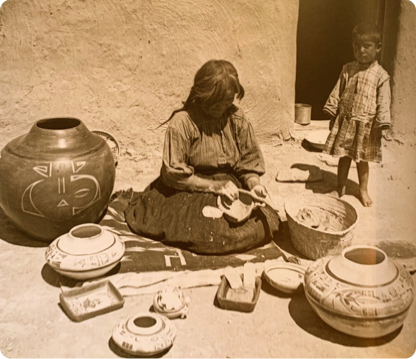
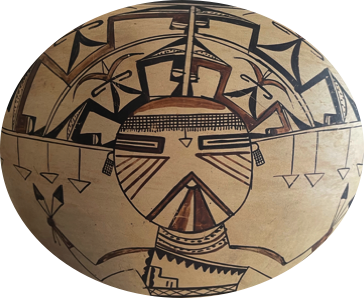
This extraordinary large Nampeyo storage type jar, c. 1890, at left and center from the former collections of early Santa Fe Indian Trader, J.S. Candelario and longtime Nampeyo pottery authority, Richard M. Howard features a wonderful large image of Polikmana kachina. The painted details of the kachina figure’s design on the two vessels are remarkably similar and are clearly recognizable as the product of the same artist’s hand.
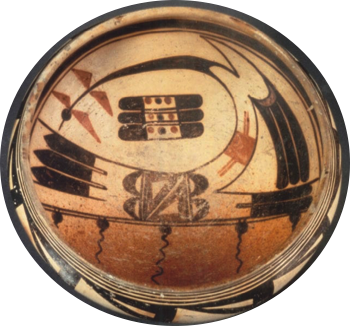
The exterior or top of the shoulder designs are a wonderful border of split-feather, terraced and geometric motifs done
in two symmetrical panels placed bi-laterally 180 deghees directly across from each other, another Nampeyo "signature" trait. This border forms a wonderful circular “frame” around the interior Polikmana image. This is one of the great beauties of this particular bowl/jar cionfiguration, the integration of exterior and interior designs to form a single harmonious combined design presentation. This arrangement adds an intensely visual spatial layering or "depth" and
dynamic quality to the overall design scheme, another unique defining Nampeyo artistic trait.
The bowl/jar measures 8 1/2" in diameter and is a quite low-profile 2 3/4" in height. It is in thoroughly excellent original condition and particularly so for its century or more of age. There is a very small nick here and there and some extremely slight paint abrasion and soiling to the interior, but the piece is remarkably clean and fresh. A thorough examination of
the vessel under Ultraviolet light reveals no evidence at all of any restoration or overpainting.
Interestingly, there are a couple of places, on the figure's right shoulder and on the right side of her tablita or head dress where Nampeyo appears to have changed her mind and slightly adjusted the painting. This is something we have seen numerous times on Nampeyo's pieces, clearly she liked to get things exactly right as she saw it. Also, there is a small modern-day paper label attached to the bowl's bottom which reads "Sichomovi" which is a village on the Hopi First Mesa right next to Nampeyo's home village of Hano. This label looks like something a previous owner might have put on sometime in the 1960's or 70's.
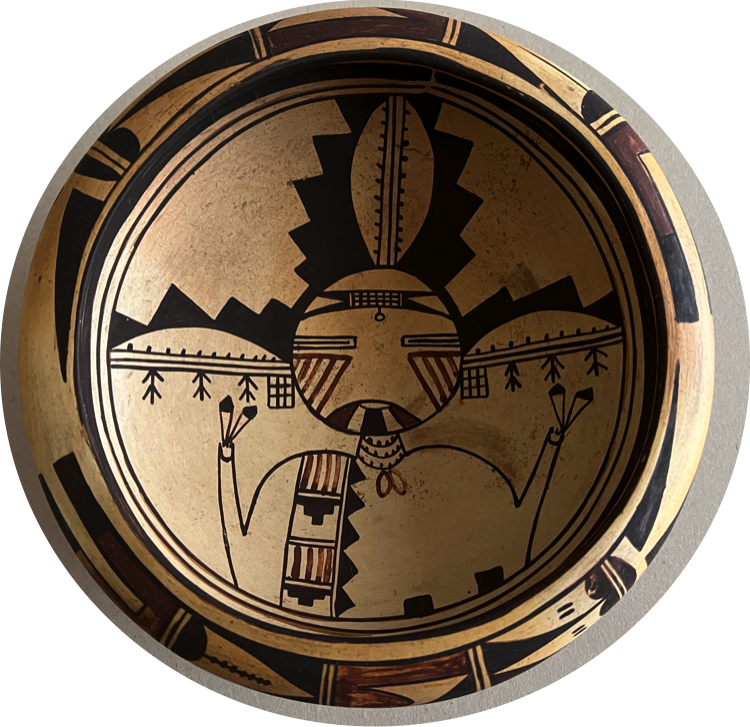
Realistically depicted images of various Hopi Kachina representations first began appearing on late 19th and early
20th Century Hopi ceramics; jars, jar/bowls, bowls, canteens, effigies and small pottery tiles, possibly inspired and encouraged by local area Indian traders such as Tom Pavatea, Alexander Stephen and Thomas Varker Keem who saw
them as being particurally appealing to tourists.
The bowl/jar’s excellent original condition makes it likely that this piece was collected very early soon after it was made, either at Hopi possibly from Nampeyo herself, or from a local Hopi Indian trading post such as Thomas Pavatea’s at Polacca village or Thomas Varker Keam’s at Keam’s Canyon or at another nearby Southwestern trading post such as
J.L. Hubbell’s or La Posada in nearby Winslow, AZ or The Fred Harvey Company’s Hopi House on the South Rim of the Grand Canyon. The pottery prize was then taken home and very clearly well loved over the generations for over the next century. It is a rare and distinct pleasure to see this sort of early piece in such a well-preserved “Time Warp” type of condition.
This bowl/jar is a beautiful introduction to the wonderful ancient-inspired yet thoroughly modern art world
of Nampeyo’s extraordinary ceramics. This bowl/jar will surely give its fortunate next owner a great deal of visual, aesthetic and historic pleasure.
Price $6,250
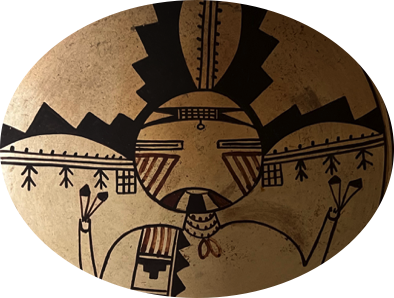
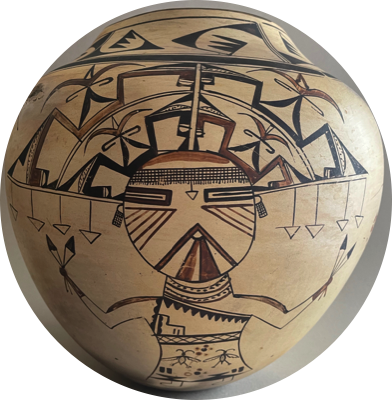
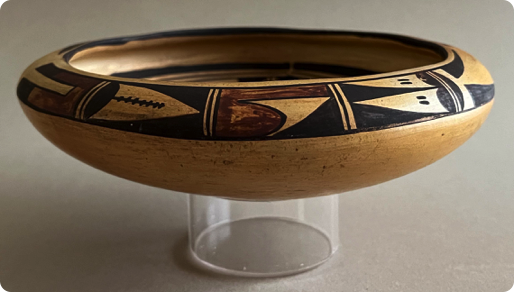
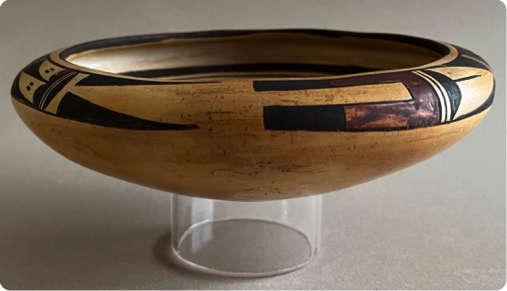
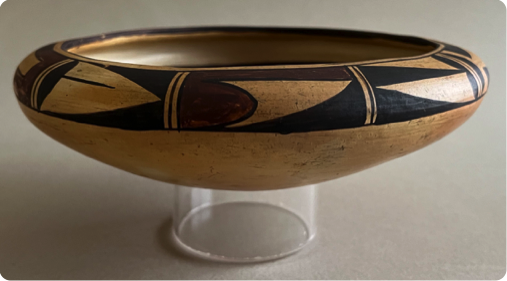
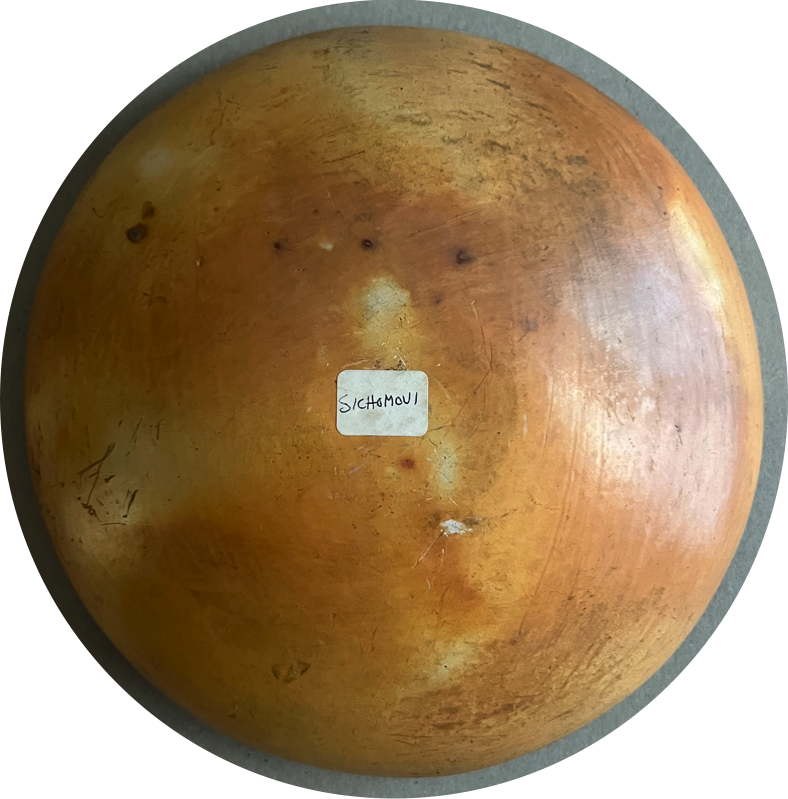
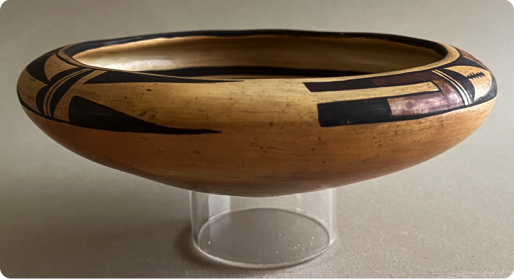
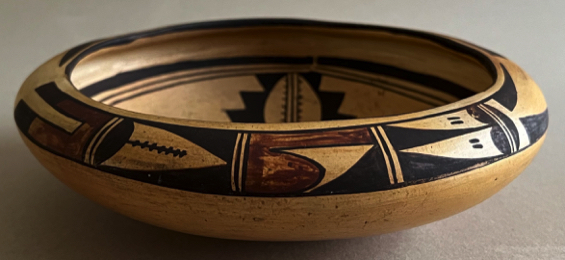
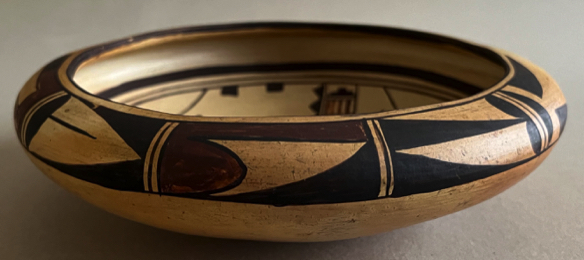
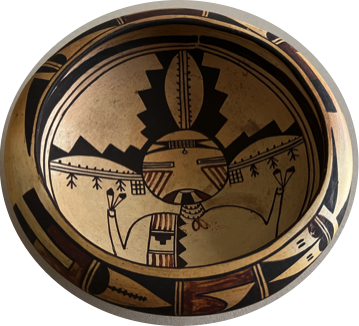
Above center, "Mrs. Nampeyo, an acknowledged best Hopi indian woman Pottery maker 1st Mesa Hopiland, Ariz. Sichomovi."
Above right, an ancient Sikyatki Polychrome type low-profile jar/bowl, c. 1500-1600 A.D.
Center photo by R. Raffius, 1905. Photo source and © Keystone-Mast Collection, UCR/California Museum of Photography, University of California, Riverside.
Right photo source and © Peabody Museum, Boston MA
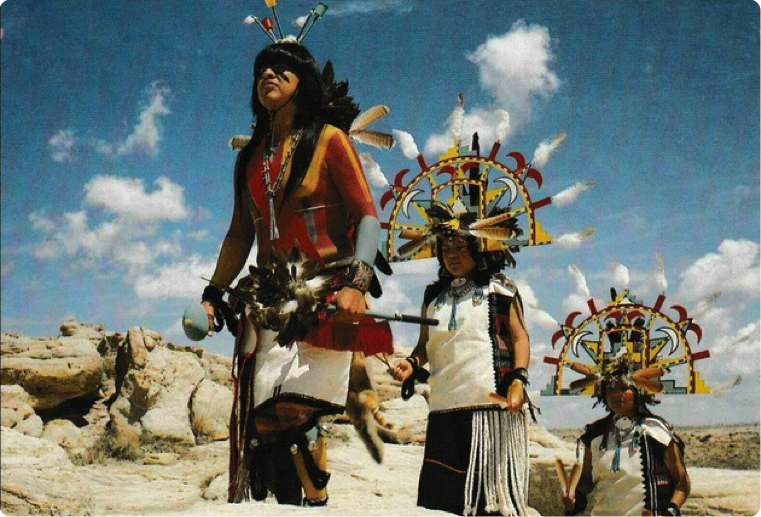
Polikmana Kachina dancers in the Hopi Butterfly Dance.
Photo source and © Arizona Highways Magazine, 1980.